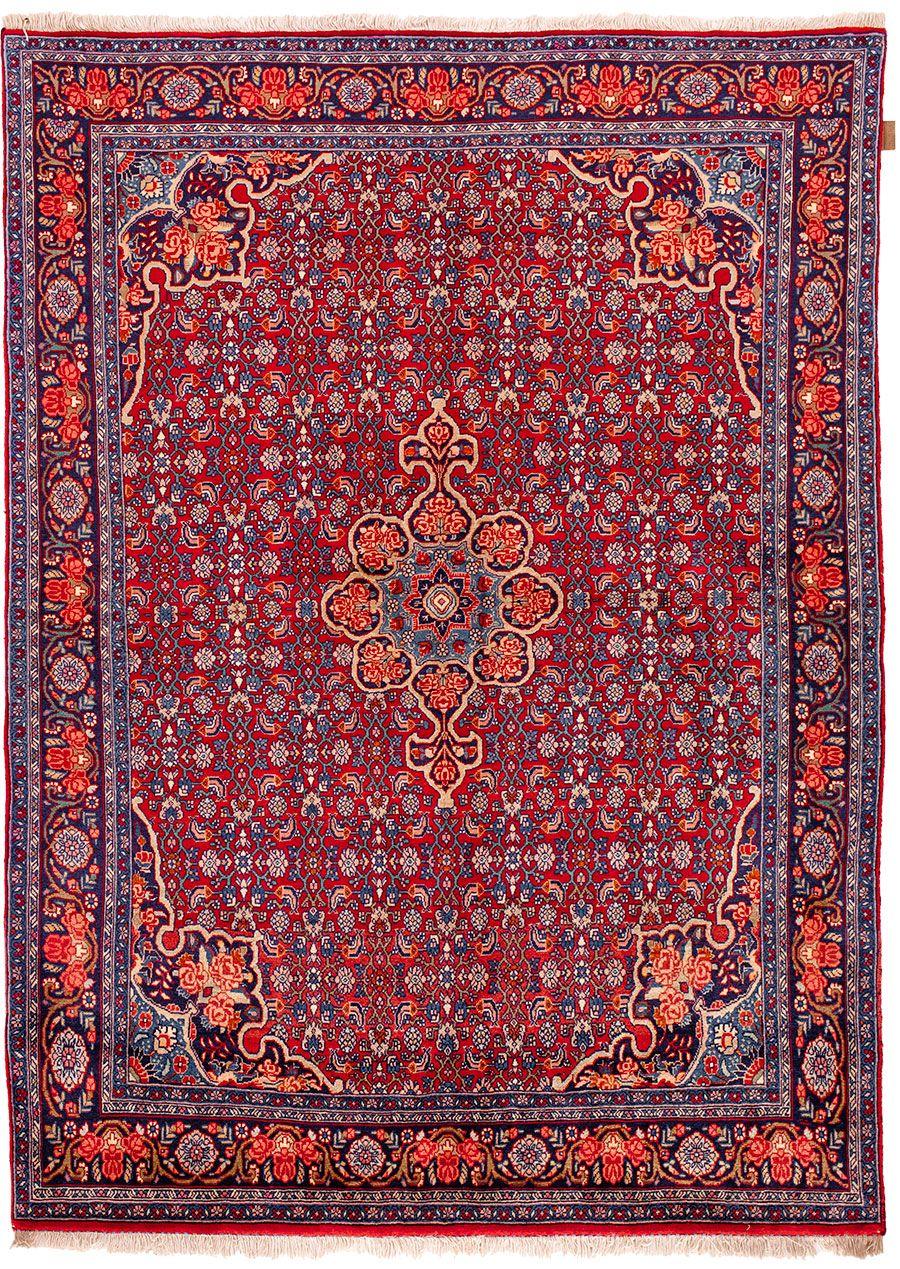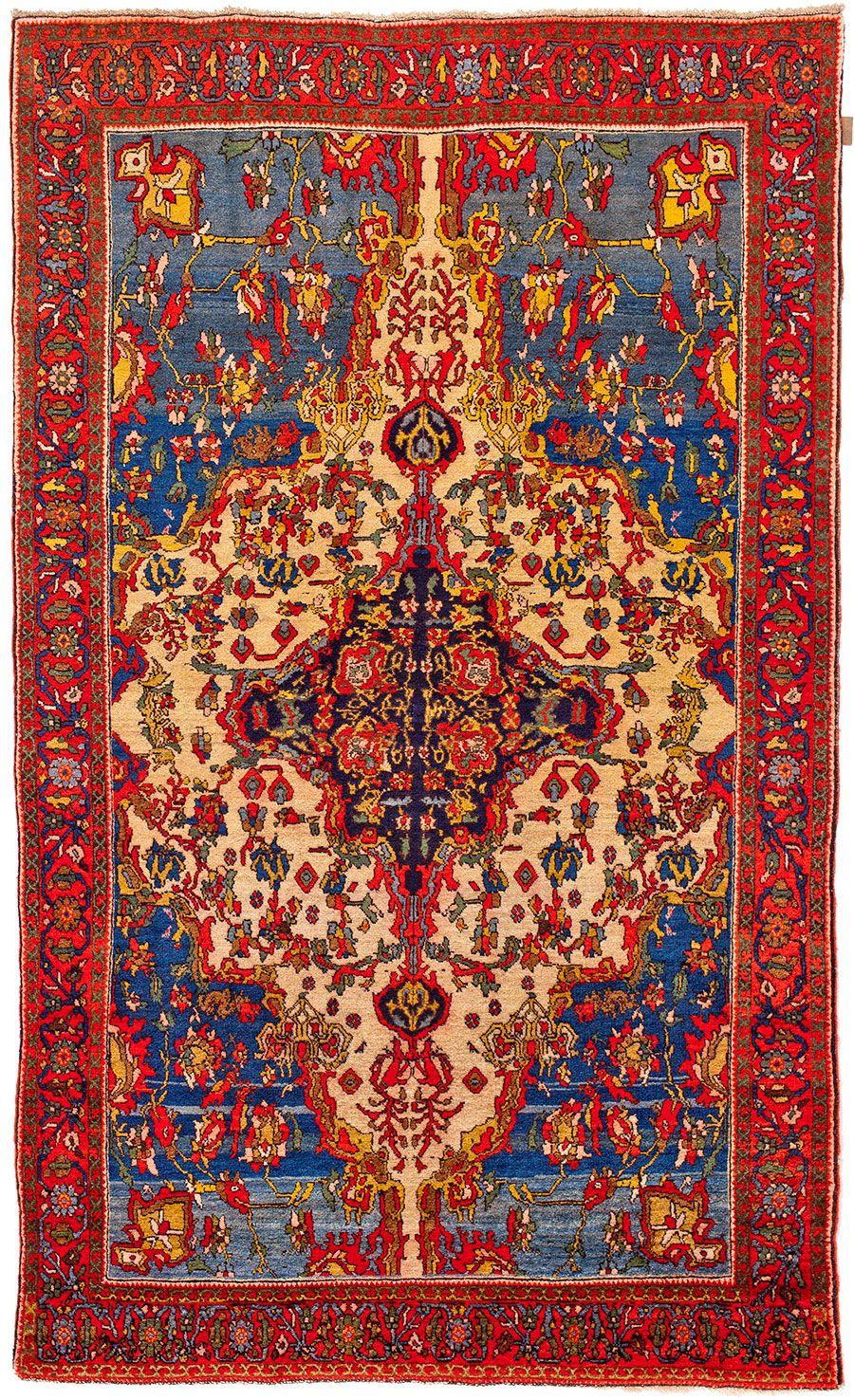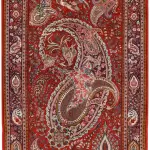Getting to know the features of Bijar carpet, known as "iron carpet"
Bijar is one of the cities in northwest Iran located in Kurdistan province. Bijar carpet (iron carpet) or gross carpet is one of the most famous and exquisite Iranian carpets in the world. The carpets of this area have a unique texture, design and color. In this article, we are going to introduce Bijar carpet and its most important features.
Bijar geographical location
Bijar is limited to Zanjan province from the north, northeast and east, from the south to Qorveh and Hamedan cities, and from the west to Sanandaj city. This city is one of the highest cities in Iran after Shahrekord due to its high altitude above the sea level. Bijar is the center of a region called Gros. The name Gros is apparently taken from a tribe with the same name, who were nomadic Kurds. Since the end of the 19th century and the beginning of the 20th century, the carpets of Bijar region have been known as Gros. Gross is the old name of Bijar and the name of one of the Kurdish tribes of the region. Bijar has been one of the most important areas of carpet weaving in Iran since the 18th century. The products offered under the name of Bijar carpet are not woven only in Bijar city, but around 30 villages around it are also involved in the production of carpets, and for this reason, it has more diverse designs and products compared to Sane region (Kurdistan). Accordingly, the buyers of European countries have classified the carpets of this region into two categories: urban carpets and rural carpets. Some of the designs have specific patterns, such as Herati, and some others are inspired by various rural patterns and designs.
Background of carpet weaving in Bijar
In Bijar, at the same time as the Sassanids (before Islam), knotted carpets were woven with long wool piles. During the period of Ilkhans in Bijar, in addition to carpet weaving, rug weaving and carpet weaving became common, and because of its strength and high-quality wool, it was traded in Iran and abroad. During the Safavid period, which is the peak period of carpet weaving in Iran, by order of Shah Abbas, each carpet weaving center should weave its own carpet in a way that preserves its original and artistic features. In the middle of the Safavid period, there were changes in the texture of Bijar carpets, which can be mentioned as changes in slime patterns and similar patterns, as well as changes in color, materials, materials and sizes of carpets. During the Afshariya and Zandiye period, Ili, rural and nomadic carpet weaving flourished in Bijar villages. The Qajar period is the period of development of this art in Bijar. During the Qajar period, exquisite carpets were woven in the carpet weaving workshop of Khosroabad village and other areas, and female weavers were paid wages. In the beginning, the weaving machines were very primitive, which caused the poor quality of woven carpets. During the tenure of Hasan Alikhan Grossi Amirnizam as Iran's ambassador in Paris, at his request, Bijar carpet weavers produced their carpets in accordance with international standards, thus new changes in the texture of gross carpets were created.
Bijar carpet from the eyes of Europeans
Cecil Edwards writes in the Iranian carpet book: "Bijar carpet has a special status, it has a unique texture and material that cannot be found in Iran and other countries of the world. Its design and color, despite the roughness and irregularities of the design, are full of features. which belongs to the carpet weavers of this area. It is hoped that they will keep their heritage intact and flawless.
Why Bijar carpet is known as "iron carpet"?
Bejar carpet is known in the world as iron carpet. Because first of all, Bijari carpet weaving artists in the weaving of their carpets, after passing the thick weft, they pass a kind of rope from side to side of the cheles (the same as the original thick weft) and in fact, the dafe (or daftin) on this weft is like a rope, and because according to the habit Reluctant weavers press their carpets firmly, the pressure resulting from this action causes the main thick weft to go down and as a result, a lot of pressure is applied to the woven rows. In this case, the texture is more compact and the lines are well placed on each other. Finally, after beating the thick tissue, the rope-like tissue is removed. The second reason is the appropriateness of using wool, yarn, warp and weft in Bijar carpets. The average of wool used is 70% and the average of warp and weft used is 30%, and the use of more wool in Bijar carpets makes it stronger and more durable.
The characteristic features of Bijar carpet
Carpet weaving in Bijar and Gros region belongs to the category of rural nomads, and single weaving and mental weaving have been the most important features of rural Gros carpets in the past periods, which have a lot of variety. For this reason, rural and nomadic textures were known outside the borders of Iran for many years. The types of designs and rural and nomadic figures of Gross can be considered as including human, animal, beneficial and mythical animals in people's lives, plant or natural figures such as the moon and the sun, and object figures such as scythes. Among the most important urban designs of Farsh Bijar, we can mention Lachak and Tareng Vagiraei, hunting ground and garden.
Texture style changes over time
The special characteristics of the fabric, such as the presence of two piles and the high density of piles per surface area, patterns, original and old and beautiful designs, caused the evolution of the weaving method over time (for example, the change in the weaving method during the Safavid and Qajar periods) until the beginning of World War II. And after that, the gross carpet weavers abandoned their ancient tradition of weaving small, rough and large carpets and succeeded in producing carpets that are unique in terms of texture. They took an action to weave carpets with a more beautiful design. That is, they used more threads in the carpets and used yarn instead of wool for the warp and weft, which adds to the strength of the carpet. But due to the compactness of the texture, they had to weave the threads very thin, and as they used to weave these carpets with two tufts and Turkish knots, they also made the tufts very delicate and by shortening the piles, they made the designs clearer and brighter.
The texture of exquisite carpets
For the weaving of exquisite carpets, the long wool of the live sheep of the region is used due to its long fibers and high quality. Among the iron carpet borders, we can mention Herati border, flower and leaf border, Bete border and Shipuri border. Trumpet border with a flower pattern is one of the most famous motifs that has a very long history and is used a lot in the texture of Bijar carpets. In this pattern, Trumpet flowers are regularly drawn as a single branch or in several bunches next to the pictures in the middle of the carpet border. In fact, it is a border with a picture of a curved vine decorated with trumpet flowers. Artists used flowers and leaves, all kinds of wide, narrow and small ornamental flowers and leaves in broken or twisted form in the edge of the carpet. Bete border is one of the most beautiful Iranian designs. Bijar is one of the major centers for the production of Naqsh Bete on the edge of the carpet. Mostofi's design in the margin is one of the old designs. In this map, the large margin joins the double small margins from both sides.

Shiraz, knot and weft in Bijar carpet
Bijar carpet shiraz is connected and parallel type of shiraz. Bijar carpets are shirazed during weaving. The type of knot in Bijar carpet texture is symmetrical knot or so called Turkish knot and the carpets of this region often have 40, 45 and 50 number. In fact, this knot is tied on two threads. Bijar carpets have two weaves. It has a thick texture and a thin texture, respectively. It is worth mentioning that after the end of the process of pulling the rope, which is known as "Ban Po" in the Kurdish language, it is removed from the rows and then a thin weft is woven. Gros carpet (Bijar) is of the vertical type with a lighter and is currently mostly made of iron.
Bijar carpet dimensions
Bijar carpets (gross) are often in dimensions of 6 meters, 12 meters, head (2.5 x 112) or (3.5 x 112), two cubits (224 x 140), one and a half cubits (112 x 168) and back (60 x 80), (85x65) and (90x70) are woven.
The most important production centers of Bijar (gross) carpets in the past and present
Hasan Taimur village, Deh Baneh village, (Dioneh was one of the centers of carpet weaving and all the residents of the village worked as carpet weavers), Mirk village, Helvai village, Gohar Chin village (Gor Chin), Khosro Abad village, Rahmat Abad village are among the most important There are carpet weaving centers in Bijar region.
Art and beauty in the Gross carpet
So far, we have provided complete information about the technical characteristics of the weave of the gross weave carpets. In the following, useful information is provided about the design, pattern and coloring of these beautiful handwovens.
Color in Bijar carpet:
In Bijar (gross) carpet, color is of special importance. The original and vegetable colors that have been used in a number of useless carpets in the past have remained stable and stable against atmospheric factors and their color has not changed much. The most common colors used in gros carpets include: the color known as ocher, light color, red, bright red, thistle, brown, light brown, garlic brown, sumac, navy blue, turquoise, blue, onion skin, straw, It is earthy and lacquered. Plant materials that have been used for dyeing wool to produce carpets also include: walnut skin, white alum, black alum, runas (Ronias), pomegranate skin, indigo, saffron, straw, onion skin, sumac, willow leaves, yellow Chobe, sour stone, anemone, hair leaf, dry lemon, elderberry, almond, almond skin, chamomile flower, gora seed, grape seed, black eggplant skin, etc. The colors used in Bijar carpets, such as lacquer, red lacquer, turquoise and blue, are the monuments of the Safavid period, which is the result of the efforts and cooperation of Safavid era painters and carpet weavers. The dyes that are produced with the help of plant products are applied on wools that have been dyed using a substance called white alum.
Designs and patterns in Bijar carpet
In the design of the Gros carpet, the mental concepts in the art of patterning are obvious and it exposes the mysteries of ancient Iranian traditions and heritage to the viewer. Herat design or Mahi Dherham, middle bergamot and usually without corner flaps or slim margins, Majnoon willow, Minakhani, which Minakhani and Trumpet flower were among the motifs of Grosz region in the past. Minakhani is one of the famous characters of Kurdistan and Gros, and its main origin is the west of the country. Also, Salimi Sardari, Golfarang Mostofi, garden carpets, vase carpets, tree carpets, Golestan, Shah Abbasi carpets, flower and nightingale are among the ancient paintings of Bijar. Geometric fringes and flaps with pictures of fish are the characteristics of Bijar carpets, past and present. Also, mental, animal, plant and geometric designs in carpets with identification were used by artists in the past. During the Qajar era, designs such as Herati, Minakhani, Lachak Taranj, Shah Abbasi Bijar, Islamic motifs, especially the flowers, flowers and nightingales, flourished in Bijar carpets. Golfarang Mustofi is one of the famous designs of Bijar.
Contemporary designs in Bijar carpet
Designs that have been used in Bijar carpets in the contemporary period include: Shakargah, Shakargah Taranjdar, Shakargah Dornama, Gulfarang, Mustofi Gulfarang, Patterned Gulfarang, Lachak Turengdar Gulfarang, Slimi Gulfarang (Pichi), Bijar Gulfarang, Bouquet, Flower and Nightingale. , vase design, crab design, design such as Khatam Shirazi Bandi, Golfarang Bandi, Minakhani and Trumpet Flower, Dar and Flower, Rabi Dar and Flower, Mustofi Dar and Flower, Shah Abbasi, Shah Abbasi Afshan, Shah Abbasi Bijar, Lachak Tanrajdar, Simple Kof, Slimy, such as Golfarang slimy, geometric slimy (Sardari), Torpedo mouth, tree like Majnoon willow, flower and nightingale tree, perspective tree, potted tree, cashmere tree (Bete Jakeh), Darham fish, Bijar fish, Afshar fish, Mirk fish, Mahi Zubideh, Mahi Hassan Taimur, (The design of Mahi Bijar, Mahi Hassan Taimur, and Mahi Halvai is the same. The design of Mahi Zubideh and Mahi Hassan Abad is one that is known as large fish. Mirk fish is short and wide, and it is the busiest fish design) . There are geometrical designs such as Seman Bar Khanum, broken Slimi, Shirazi seal, Herat map with tranj in the middle, etc. But the designs that are mostly used by Bijar carpet weaving artists today are: Dargol, Golfarang Mostofi, Golfarang, Shah Abbasi, Mostofi Bijar. Bush, tree, flower garden, garden, minakhani, florang, red flower, Shah Abbasi, bandi, vagirei, flower bouquet, trumpet flower, etc., which are among plant motifs. Bird, horse, Bijar fish, Afshar fish, Durham fish, and other types of fish, lion, etc. are among the most important animal motifs in the Bijar carpet texture.
Conclusion
Bijar carpet (or gross) is one of the most exquisite, original and beautiful Iranian carpets, which has many fans in foreign markets. This carpet is known as an iron carpet due to the special method of wefting and the suitability of wool yarn compared to cotton. They gave this name because of the high density and strength of these carpets. By buying Bijar carpet, you can enjoy its unique quality and beauty.
You can inquire about Buying Handwoven Carpets , Buying Handwoven Kilim and Mats, and Buying Handwoven Pictorial Rug Tableaus online from the Hoveida Carpet Store and register all your orders and Wherever you are in the world, deliver it to the desired address in less than 4 working days.
If you are interested in reading other articles in the field of Handwoven carpets or Handwoven Pictorial Rug Tableaus , please refer to Hoveida Carpet Commercial
Leave a comment
Your email address will not be published. Required fields are marked *












